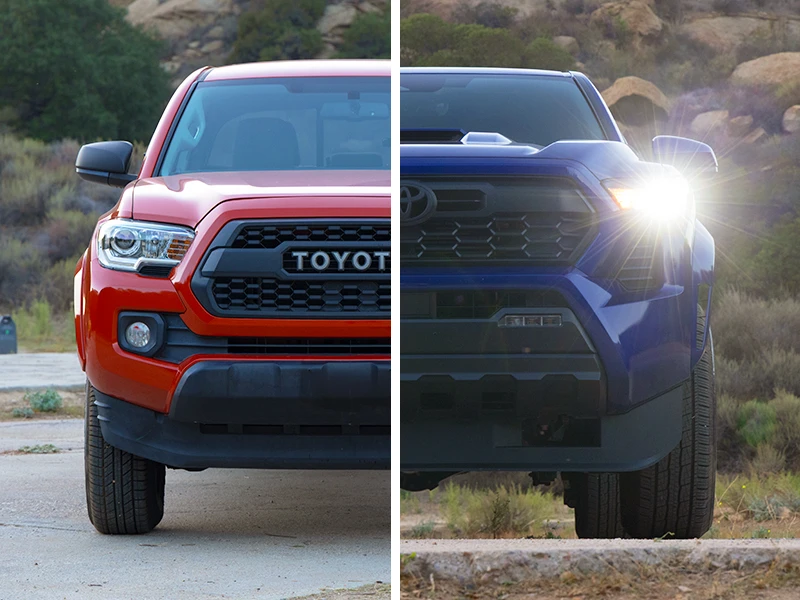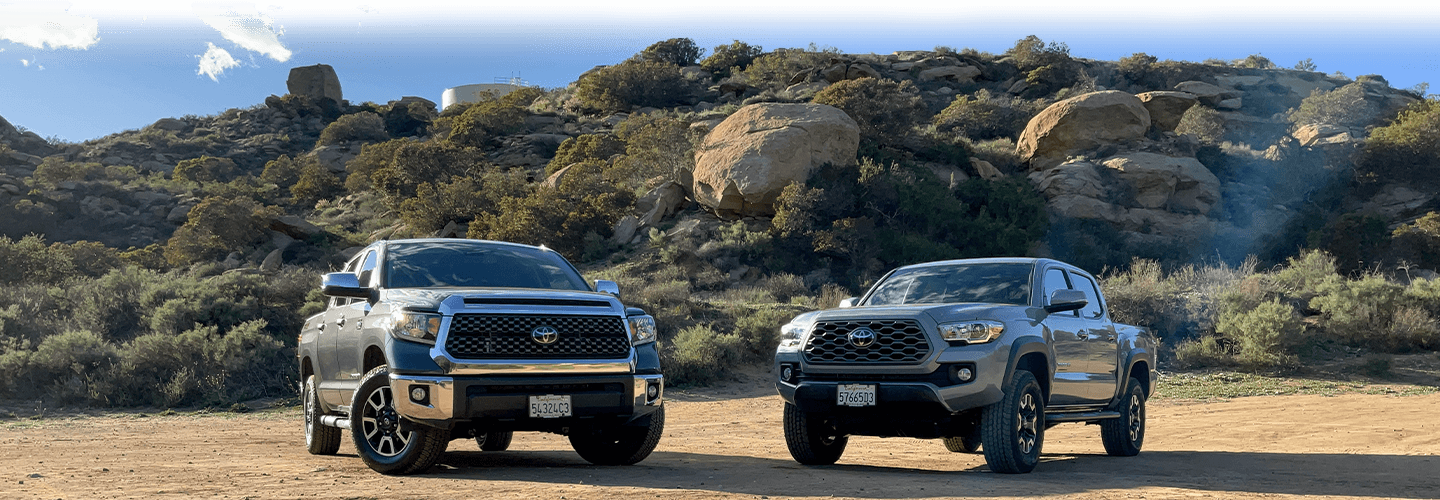
These fan-favorite trucks are known for toughness and all-around utility.
With thousands of vehicles in our inventory, we’re here to help make car research easier for you. We’ve partnered with car-review experts from Edmunds to weigh in on what matters most when you’re looking to buy a truck or car.
***
Vehicles Reviewed
2021 Toyota Tacoma TRD Off-Road
2021 Toyota Tundra SR5
Toyota trucks are a big draw. And why not? After all, the Toyota Tacoma and Toyota Tundra are proven workhorses for all kinds of tasks both big and small. But which one will be right for you? Edmunds' Ryan ZumMallen walks you through the main differences between the two, gives you the pros and cons of each, and provides some personal recommendations to help you decide.
What are your options?
The Toyota Tacoma is the smaller of these two trucks. It's a midsize pickup, which is the same class of trucks that includes the Ford Ranger, Chevrolet Colorado, and Honda Ridgeline. The current Tacoma is the third-generation version, and it has been on sale since 2016. For the purposes of this article, we'll focus on the 2021 Tacoma because it provides a good representation of Tacomas following some significant changes made for the 2020 model year.
You can find the Tacoma in two main body style configurations. First, there is a smaller extended cab (Access Cab) that comes with a 6-foot bed. Then there is also a larger crew cab (Double Cab) with more room for rear passengers, and you can select either a 5.1-foot bed or the 6-foot bed.
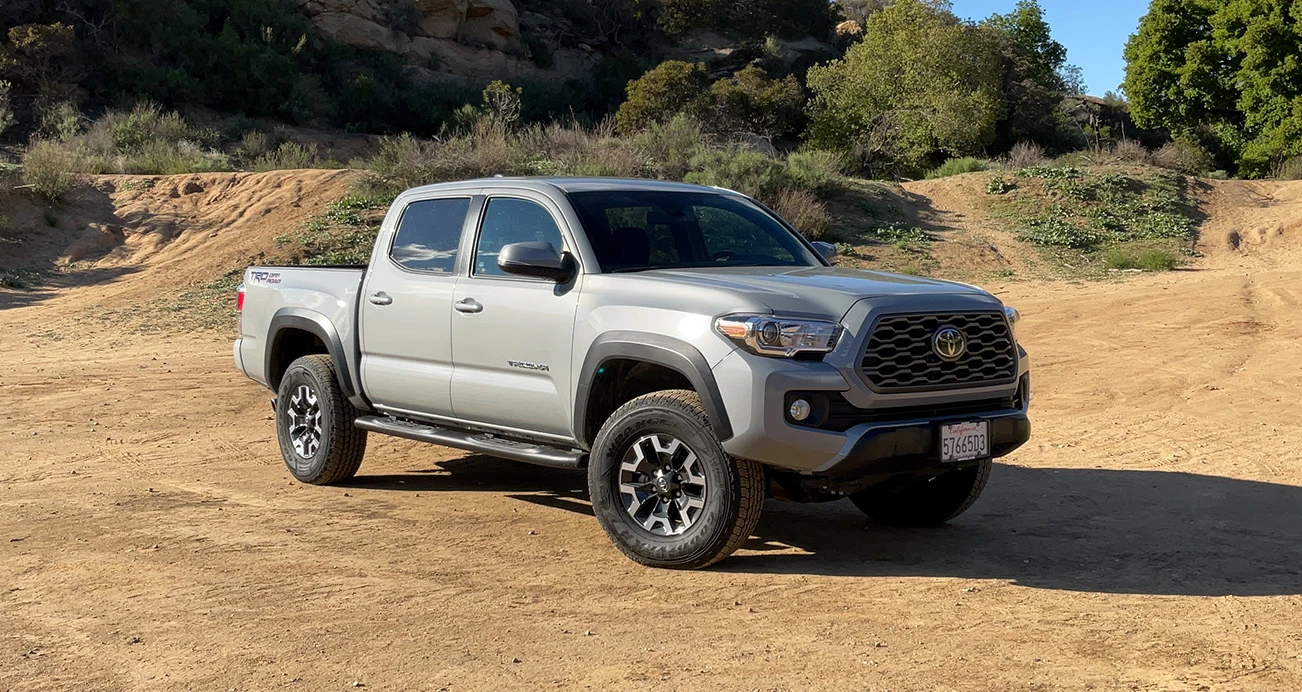
On top of that, the Tacoma comes in a variety of trim levels. To start there's the base SR trim, followed by the SR5 and TRD Sport trims that have additional features. With the TRD Off-Road you get improved off-road capability, and beginning with 2017 models, there is a TRD Pro for even better rock-climbing ability. Last is the Tacoma Limited, which is the most luxurious Tacoma you can buy.
Naturally, the Toyota Tundra is the larger truck in this comparison. It's known as a full-size pickup, which competes in the same arena as the Ford F-150, Chevrolet Silverado 1500, and Ram 1500. This article focuses on the second-gen Tundra that went on sale in 2007 and lasted through the 2021 model year. For this article, we'll focus on the 2021 Tundra for its selection of modern features.
The Tundra comes in two cab sizes. There is the smaller four-door crew cab (Double Cab) and a larger version (CrewMax) for the most possible space. Depending on the cab you select, you can choose from 5.5-foot, 6.5-foot, and 8.1-foot pickup beds.
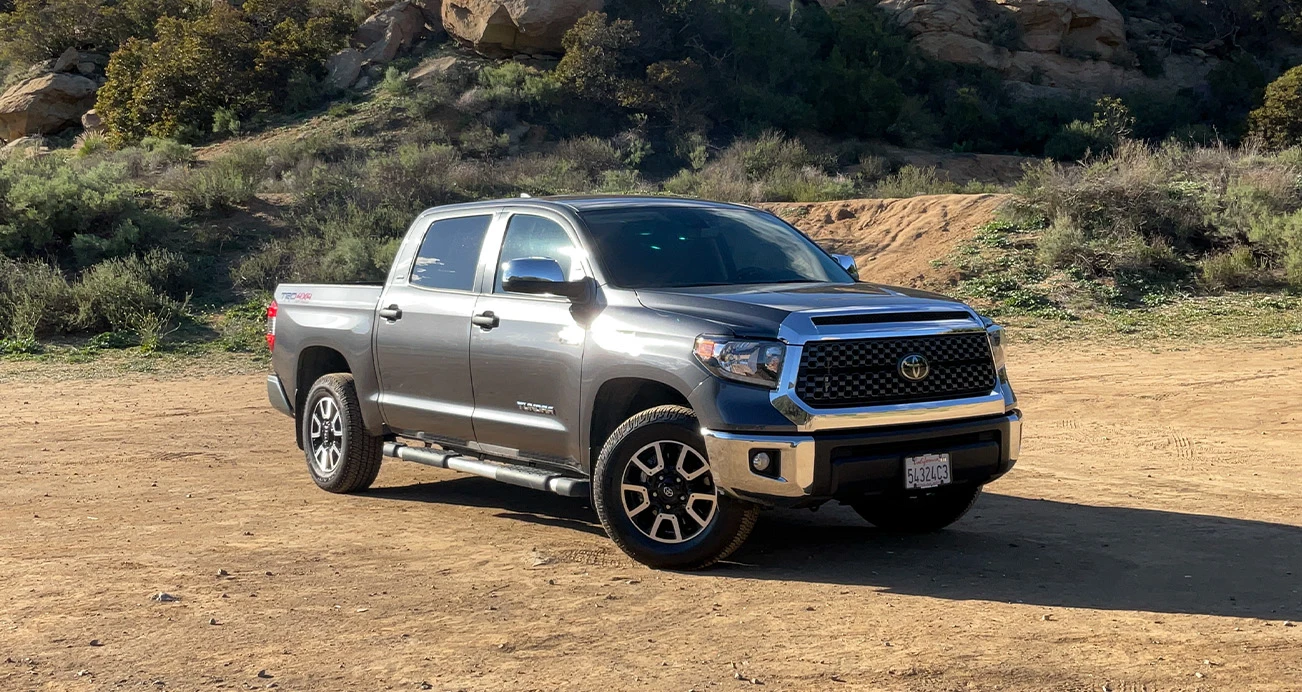
Tundra trim levels are similar to the Tacoma. The starting trims are the Tundra SR and SR5, and then there are the more loaded-up trims: the Limited, the Platinum, and the top-dog 1794. The TRD Pro is the trim that provides the most off-road capability. These are the common trim levels, although you may find rare versions for certain years such as the 2021 Trail Edition.
What engines do they come with?
The Tacoma offers two engines to choose from:
Standard on SR/SR5: 2.7-liter four-cylinder (159 horsepower)
Optional on SR/SR5; standard on others: 3.5-liter V6 (278 hp)
And here's how the 2021 Tacoma does when it comes to EPA-estimated fuel economy:
2.7-liter four-cylinder: 21 mpg (RWD) or 20 mpg (4WD) city/highway combined
3.5-liter V6: 21 mpg (RWD) or 20 mpg (4WD) combined
3.5-liter V6 with a six-speed manual transmission: 18 mpg combined
As for the Tundra, this truck is packing some major power. Earlier versions of the Tundra offered a standard 4.6-liter V8 engine (310 horsepower), but it was eliminated from the lineup after the 2019 model year. That meant that beginning in 2020, the only engine was a 5.7-liter V8 (381 horsepower).
As you might expect, its EPA estimates for fuel economy are lower. The 2021 Tundra with the 5.7-liter V8 gets 15 mpg combined for RWD models or 14 mpg combined for 4WD.
Ryan's take: The Tacoma's four-cylinder engine is underpowered for what I expect from a modern pickup. Its EPA-estimated fuel economy isn't any better than the V6's, so there's not even a payoff at the pump. The Tacoma's V6 is the better buy. If you're hauling a heavy load or climbing up a steep off-road trail, it simply does not quit. The V8 in the Tundra is more of a roaring jet engine of a motor. It's not polite or civilized, as evidenced by its 15 mpg combined. But it is strong.
What are the interiors like?
Both of these trucks embrace their hardworking, tough personas. The Tacoma, for instance, is all about straightforward design and easy-to-use controls. Make sure you test the driver's seat to see if it's to your liking; some people find the seating position strange and too high. The Tacoma also requires a higher step inside than most competitors. But in total, the interior is functional and provides a good view of the road.

The Tundra has even more of an old-school truck interior than the Tacoma. The cabin is fitted with a lot of hard plastic, especially along the doors and dashboard. The plastic is good for putting up with years of hard use, but it's not up to modern standards for comfort. The blocky design looks like it's more than a decade old—because it is. But the Tundra offers loads of space inside, from all directions, and that broadens its appeal to many.

Ryan's take: These two trucks are no-nonsense work machines. That certainly applies to the interior since both of these pickups prioritize usefulness rather than flashy interior styling. They are largely made of hard plastic inside and the seats are far from plush—even on more luxurious trims. The upside? There's plenty of space, and I've had several long road trips in both and found the bargain interior grows on you over time.
What about technology features?
If it's technology you want, then you should prioritize buying a 2020 Tacoma or newer. That's when Toyota introduced a 7-inch touchscreen as standard equipment on the base SR trim level and an 8-inch screen as standard on the SR5 and other models. Both screens include Apple CarPlay® and Android Auto™ smartphone integration. For the Tundra, Apple CarPlay and Android Auto became standard for the 2020 model year, along with a 7-inch screen on the SR and an 8-inch screen on the SR5 and up. An integrated navigation system and a premium sound system are also available on the Tacoma and Tundra.
Advanced driver-assistance aids are prevalent here. Both the Tacoma and the Tundra come standard with the following:
Adaptive cruise control (maintains a driver-set distance between the truck and the car in front)
Automated emergency braking (warns if a front impact is imminent and applies the brakes if you don't respond in time)
Lane departure warning (alerts you if the vehicle begins to drift out of its lane)
These features come on every trim level beginning with 2020 models.
Ryan's take: Technology is definitely not a strong suit of either truck. Even if you get the larger 8-inch screen, the experience can't match what you would have in many rivals—particularly in the Tundra's case, where it gets blown away by massive optional screens in the F-150 and Ram 1500.
What are they like to drive?
Compared to other midsize trucks, the Tacoma feels unhurried from behind the wheel. Acceleration is not especially quick even with the V6 engine. The steering is also slow and a little heavy. But compared to the full-size Tundra, the Tacoma is relatively nimble. It's easier to see out of, too. Off-road, the Tacoma is impressively capable, particularly in the TRD Off-Road and TRD Pro trims that have additional features to increase clearance and traction.
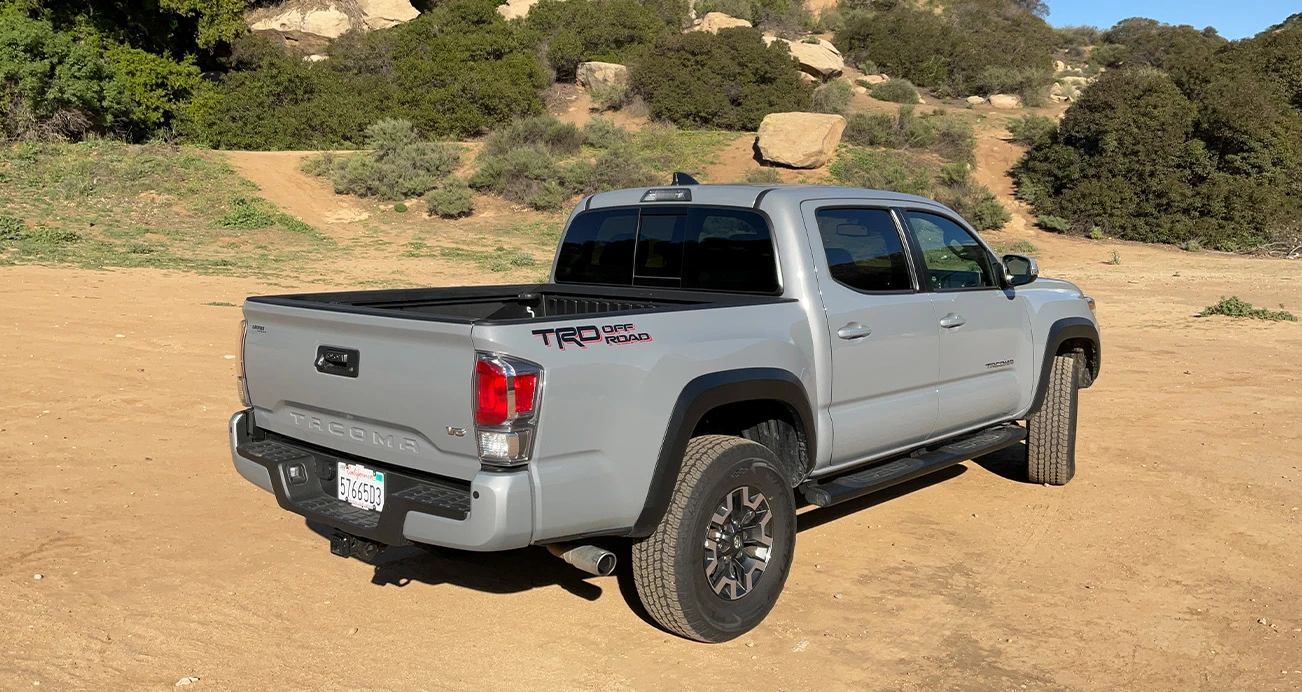
The Tundra feels large and cumbersome no matter what you compare it against. The truck responds slowly to your steering and brake inputs, and at times it can be difficult to see around blind spots or park the Tundra in close quarters. The upside is that the big V8 engine has loads of power and gets the Tundra moving with authority.
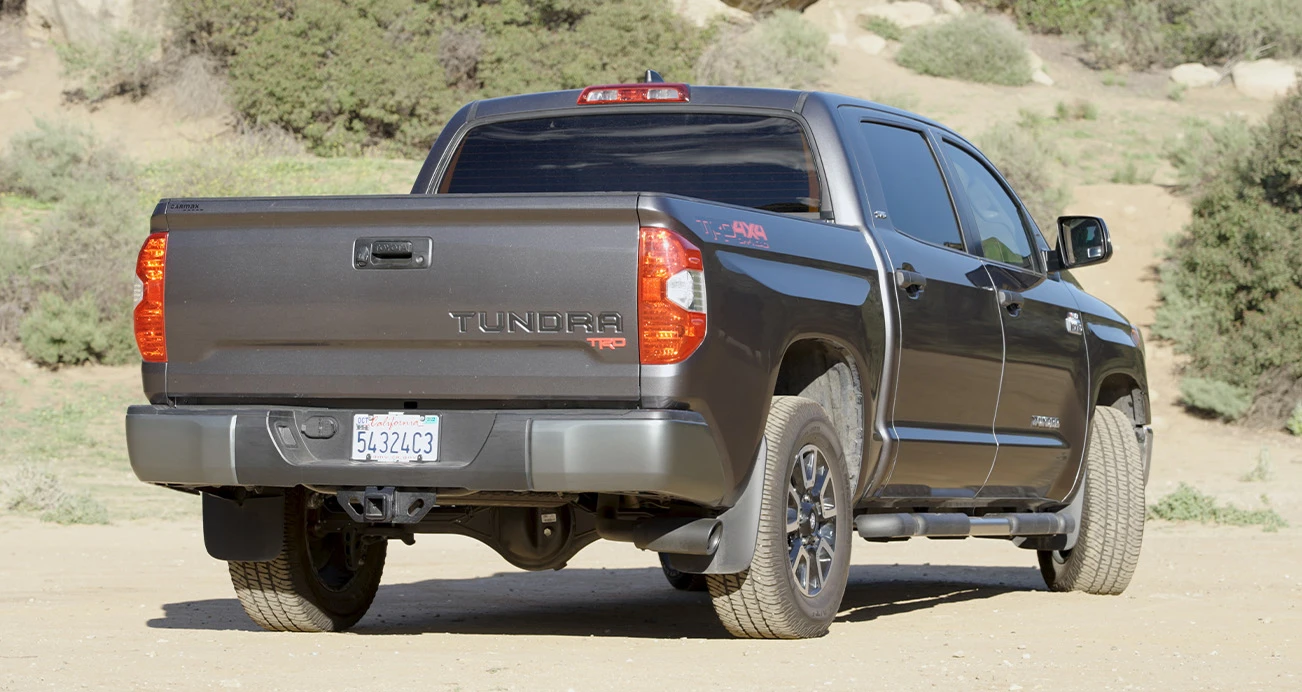
Ryan's take: The Tacoma drives like a proper truck. It gives you a good view of the road and doesn't pretend to be some high-speed thrills machine. Be patient with the steering and brakes, as they take their time responding. But in an off-road situation, this thing comes alive. It's a blast scaling rocks or crossing streams in a Tacoma. That's worth the price of admission alone. Don't expect the same experience in the Tundra, which feels enormous and heavy at all times. The throttle, steering, and brakes are all equally slow to react, so be sure to plan your movements far ahead of time. It's reasonably fun off-road as well, but the sheer size holds it back.
How capable are they?
The pickup bed is a highlight for the Tacoma. No matter which one you get, every Tacoma comes with a protective surfacing back there. That makes the bed more resistant to scratches and dents if you're loading heavy equipment on a regular basis. It's a big plus because the only way to get similar protection on a used truck with a regular steel bed is to purchase an aftermarket bedliner.
Towing capacity is respectable for a midsize truck. Models from 2021 can haul a maximum payload capacity of 1,685 pounds and tow up to 6,800 pounds when properly equipped.
The Tundra we're covering in this article doesn't come standard with a protective bed surface (although the new-generation 2022 Tundra does), but it has plenty of size and strength. The 2021 Tundra has a maximum payload capacity of 1,730 pounds , and some models are rated up to 10,200 pounds of maximum towing capacity when properly equipped. While the two differ only slightly in payload capacity, the difference in towing capacity is enough to really matter.
Now, that doesn't mean the Tundra is the best in its class. Similar 2021 models of the Ford F-150 and Chevrolet Silverado 1500 can each pull more than 13,000 pounds when properly equipped. But in comparing Toyotas, the Tundra is clearly the beefier of the two.
Ryan's take: Both of these trucks have what it takes to handle the vast majority of hauling and towing needs. Even moderately equipped Tacomas are suited to tow trailers or small boats without trouble. And of course, you can toss all kinds of stuff in the bed without worrying about it getting damaged thanks to the standard protective surface. If your idea of towing involves a big horse or recreational trailer, look for a Tundra Limited or above. That trim includes an integrated trailer brake controller to help you slow down safely.
What else should I consider?
There are plenty of pickup trucks on the market to suit your needs. Key rivals to the Tacoma include the Chevrolet Colorado (and its more premium cousin, the GMC Canyon), the Ford Ranger, and Nissan Frontier. Their best attributes are a tough affordable frame for the Frontier, a quick turbocharged engine for the Ranger, and an especially smooth ride for the Colorado and Canyon. Make sure to also check out the Honda Ridgeline. It's not quite as rugged as the Tacoma, but it's roomier, more comfortable, and easier to drive.
When it comes to the Tundra, there is a select number of excellent options. We consider the Ford F-150, Ram 1500, and Chevrolet Silverado 1500 to all be more well rounded and sophisticated trucks than the Tundra. In fact its closest competitor is likely the Nissan Titan, which trails the class due to lackluster equipment inside and out, although there have been improvements beginning with 2020 models. Comparatively, the trucks from Ford, Ram, and Chevrolet offer far more choice in terms of body styles, trim levels, powertrains, and more. They even offer things you can't get on the Tundra, such as a trick configurable tailgate or an optional diesel-powered engine.
Ryan's take: Shopping for a midsize truck is a matter of taste. I always suggest people start with a Tacoma because it checks nearly all boxes and doesn't have any glaring weaknesses, but if they prefer the Nissan, Ford, or Chevy for some reason, it's understandable. The Tundra is a harder sell. Some people are simply Tundra people and that's their truck—no discussion. That's all good. But otherwise, it's hard to justify getting a Tundra over any of the Ford, Ram, or Chevy trucks. They are simply more polished, more capable, and offer more choice.
Conclusion
The Toyota Tacoma and Toyota Tundra may wear the same badge, but there are a lot of differences between them. The Tacoma offers advantages such as a more nimble size, a protected cargo bed, and excellent off-road capability. The Tundra, for its part, has superior towing and hauling figures and that brawny V8. Understanding what you want out of your next truck will greatly influence which of these Toyotas will be the better choice for you.
Check out some of these other popular pickup comparisons from our experts:
